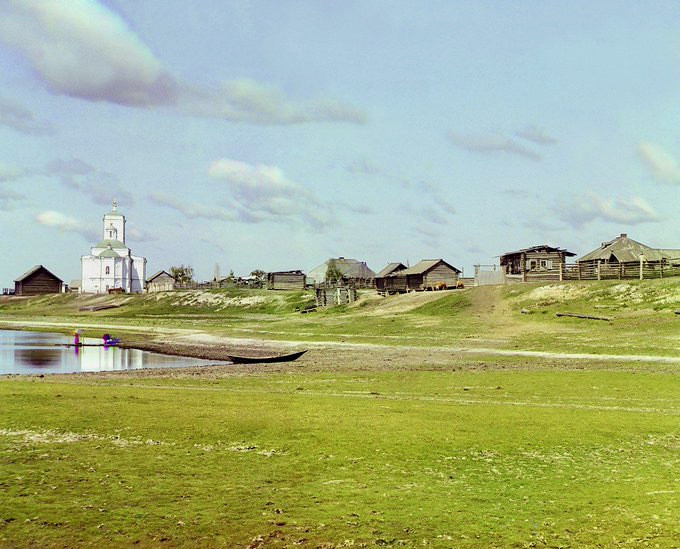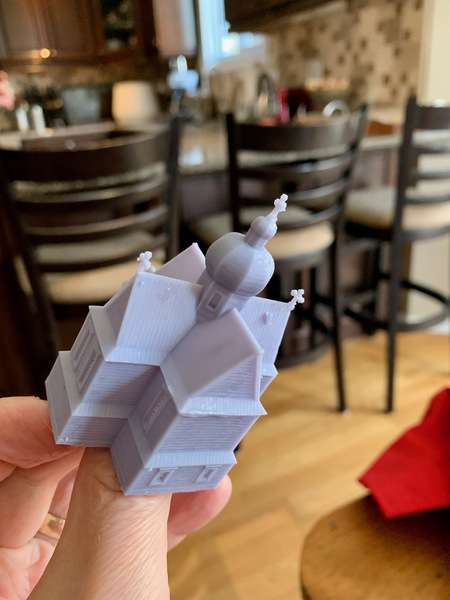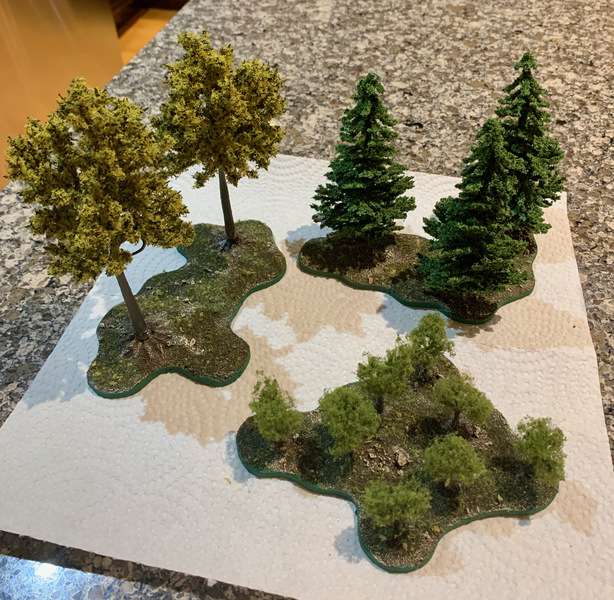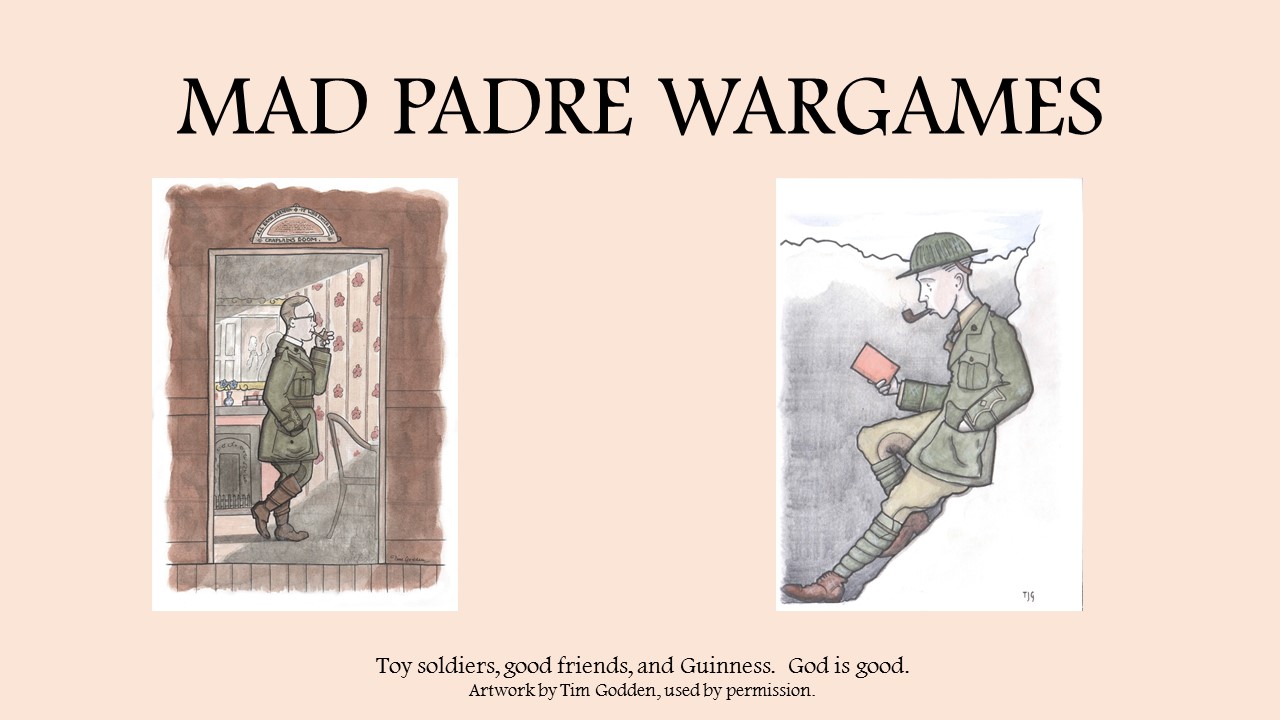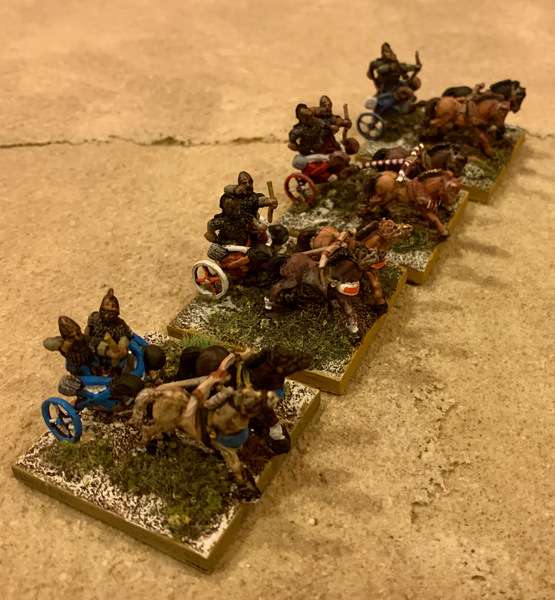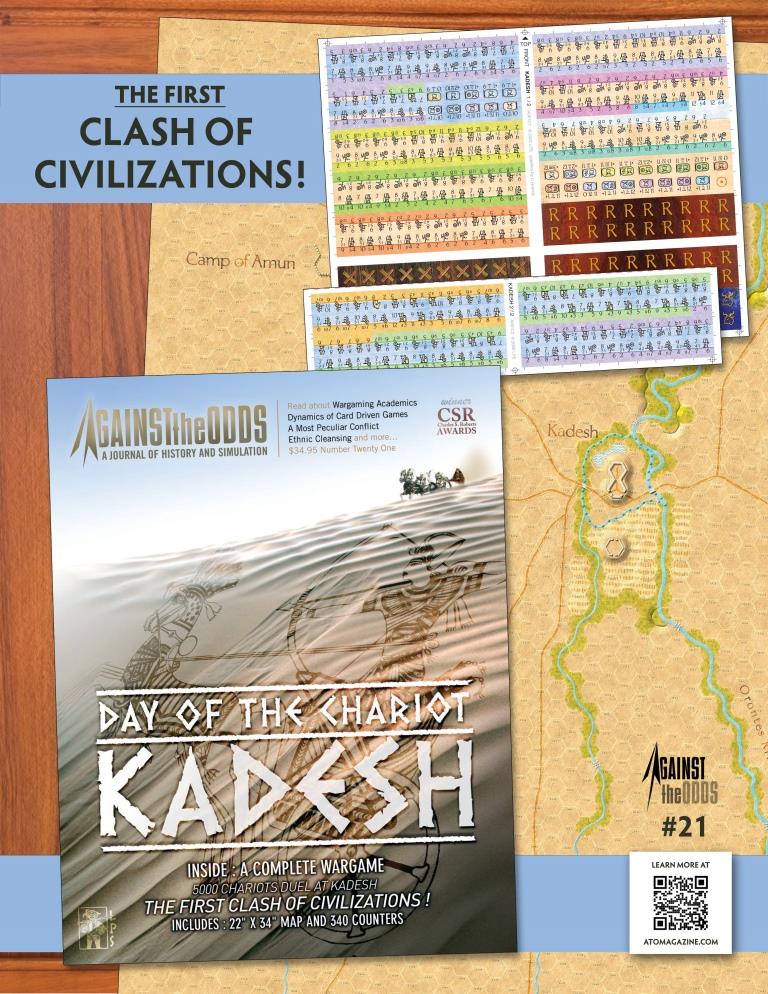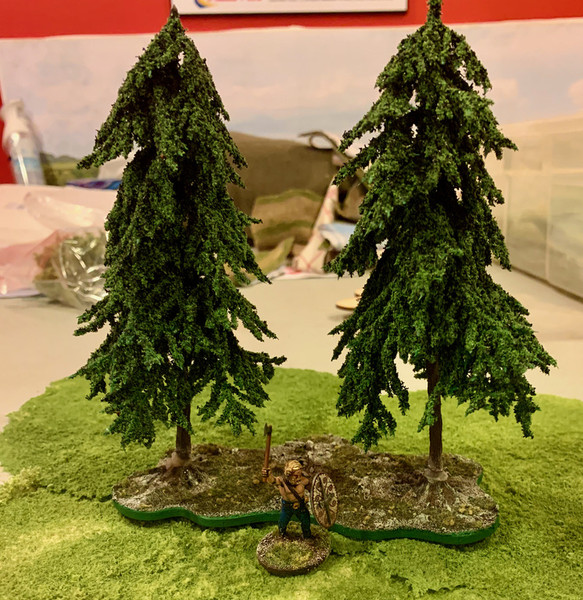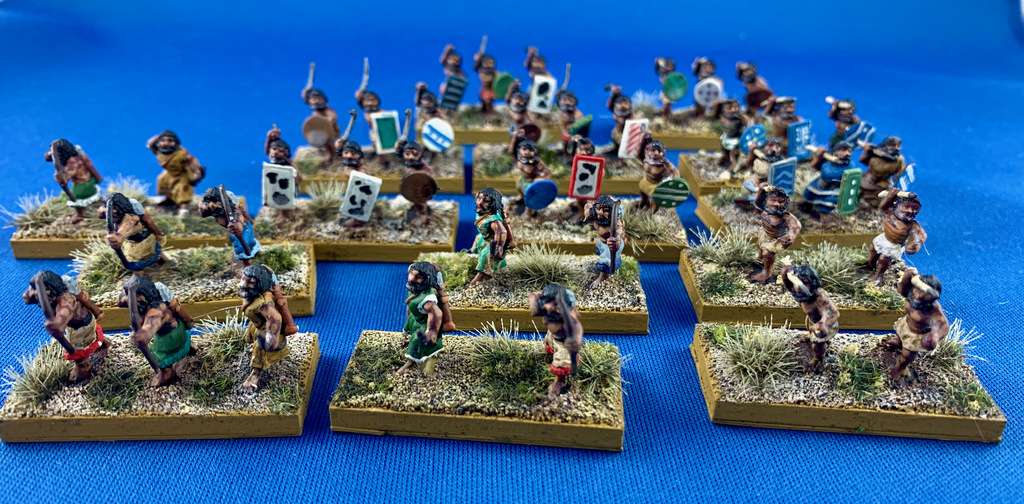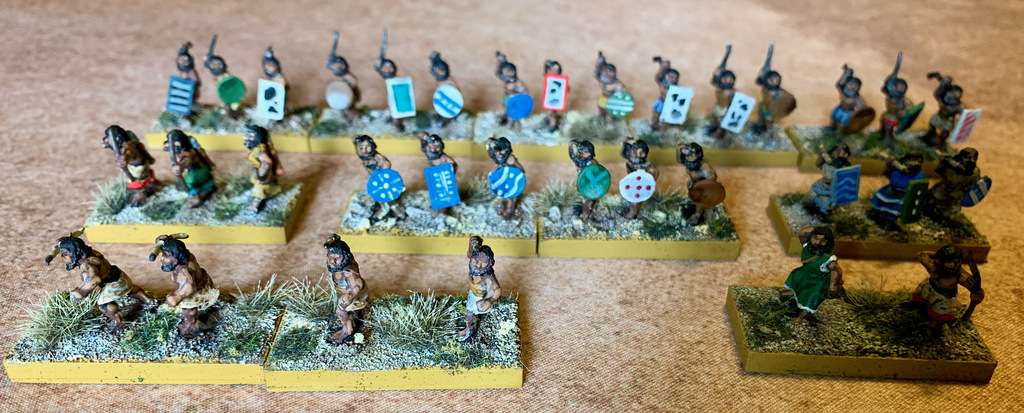Following on the heels of my last post, about the LardEh games day in Hamilton, here’s a report on the Napoleonics game I ran in he afternoon. It was the first time I’ve stepped into the role of Games Master at an event, so I was quite nervous and wanted to have the game right, balanced, fun, and looking good. The rules I chose were Too Fat Lardies’ large battle Napoleonics rules, General d’Armee (GdA), by Dave Brown and published by TFL’s Reisswitz Press imprint.
My first challenge was to finish the French ADC chits, to go with the Austrian ADC chits I made last year. In GdA, ADCs are like command or initiative points in other rules sets. They are a finite number of opportunities for the player as the CinC to influence the battle by giving orders to his brigades, and hopefully getting them to overcome the friction of the battlefield and actually do what he the commander wants. Here are eight French officer caricatures, shouting at the player or giving looks of disdain at their lack of battlefield prowess. I wanted something to add period colour and a little humour to the game.
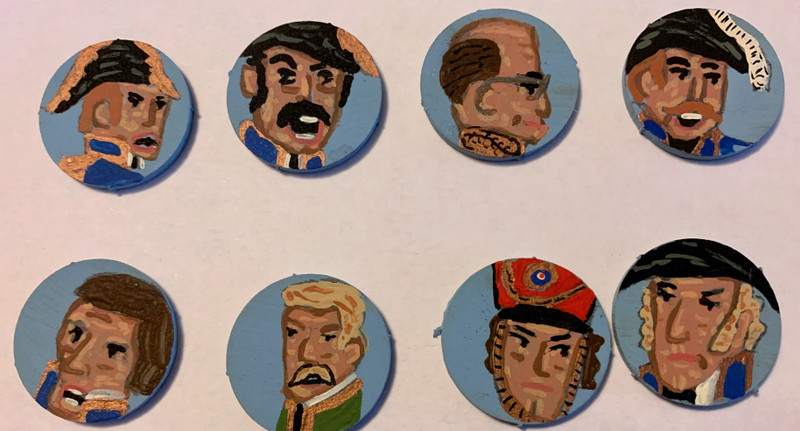
Now to decide on the battle. I have been thinking about Wertingen, the opening fight of the Ulm campaign, which in turn led to Austerlitz and Napoleon’s stunning defeat of the Third Coalition of Russia and Austria. As the Grande Army advanced through Bavaria, two French corps (Murat’s Cavalry Reserve and Lannes’ III Corps) ran into an Austrian infantry corps under Auffenburg that Mack rashly sent swanning about on an ill-conceived reconnaissance in force. Historically the French made short work of the Austrians, but in the GMT Command and Colors scenario which introduced me to the battle, it seemed like an even and manageable fight.
Here’s the playlets table, kept fairly simple as I didn’t want the players interacting with terrain pieces when they could be fighting. I find that for 6mm games with lots of troops on the table, simple is better. The cloth mat and roads are from Geek Villain (UK), the fields are latex from Barrage Miniatures (Sp), the buildings are Timecast and the hills are scratch built.
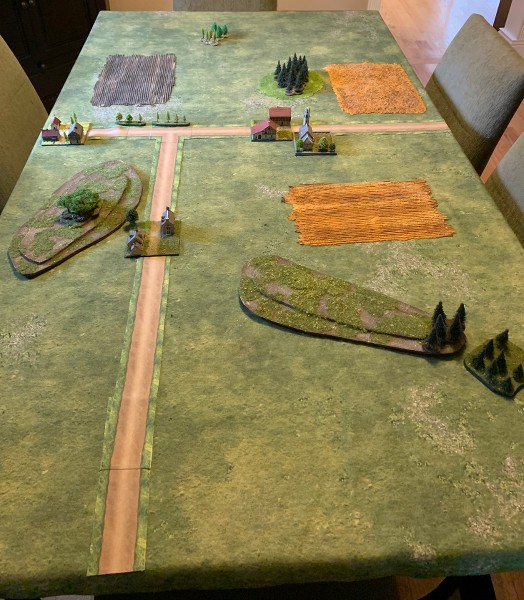
Here is the order of battle, printed on individual unit markers that will be fixed onto 3D printed unit markers courtesy of Aaron at Project Wargaming. Each marker is for a regiment or for an individual commander. There were some mistakes that I caught when I took a closer look at the rules. In GdA only Guards units are Elite, whereas good units like your typical Grenadier unit would be rated as Veteran. Thus I told the players that for Elite, read Veteran, and for Heavy Cavalry, unless marked Cuirassier in the case of the two Aus units, the French cavalry are considered Battle Cavalry, which in GdA is most well horsed line cavalry (Hussars, Chasseurs, Dragoons). The French still outnumber the Austrians 2-1 in cavalry units, with two of the Aus regiments being Small or understrength.
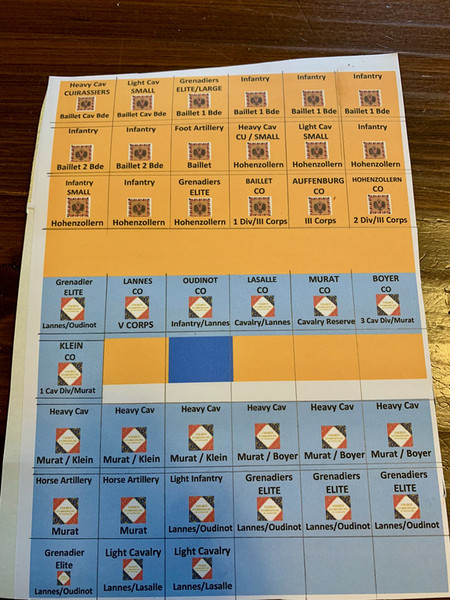
All is quite in the village of Wertingen.
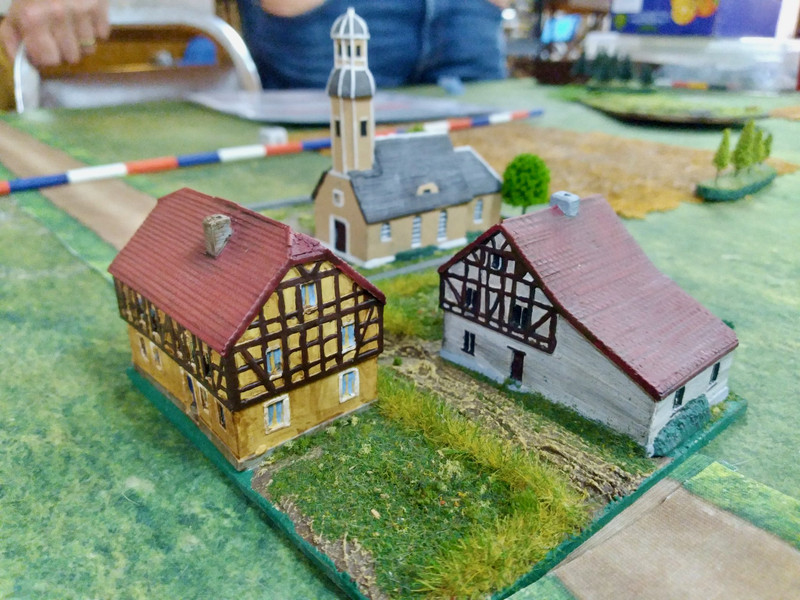
A view of the dispositions early on. That’s one of the voices of the Canadian Wargamer Podcast, James, setting up the Austrians at top left. The Austrians have to hold on the road intersection for 12 turns to win. In all the photos that follow, two bases placed together indicate a single cavalry or infantry regiment or battalion.
The two French players put both of Murat’s cavalry divisions and both his batteries of horse artillery on their left, with Lanne’s corps on the right. The French tried to get off to a fast start, realizing the clock was against them, but had trouble coordinating their advance in the centre.
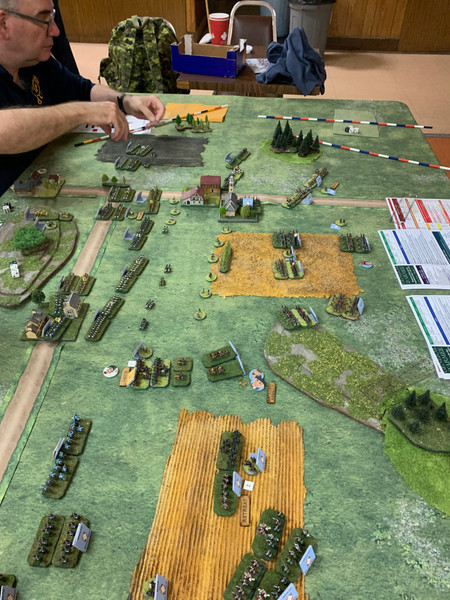
One of the Austrian players sees a chance when the French rashly push their horse artillery forward and attack with a regiment of hussars, still in column. The Austrians suffer terribly from canister, but remarkably the survivors close, and in the melee that follows, the French gunners manfully stood by their guns and saw off the chargers. It was one of several remarkable upset results. Charging is always a bit of an uncertain business in GdA, it’s a two-edged sword indeed.
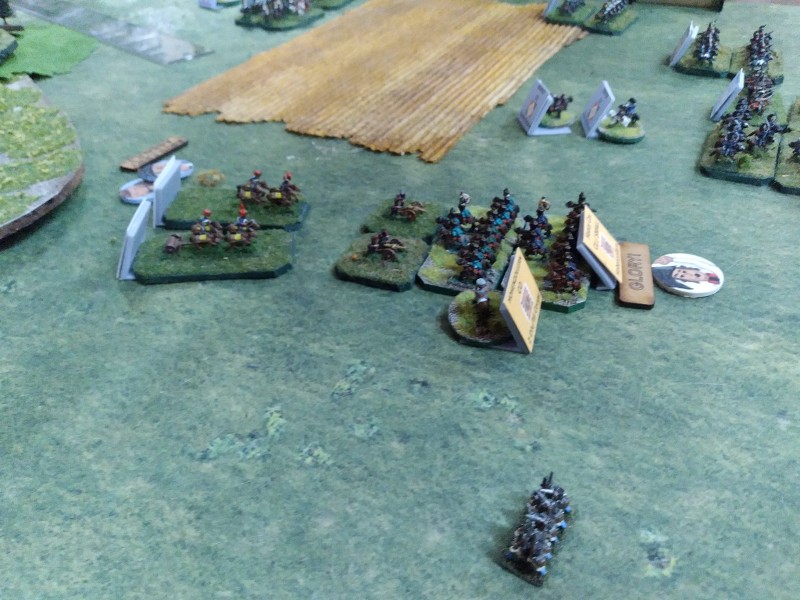
In another case of a surprise result, the Austrians throw their horse at Lasalle’s hussar brigade that is holding Lanne’s right flank, and despite their advantage of having one regiment of cuirassiers, they are thrown back.

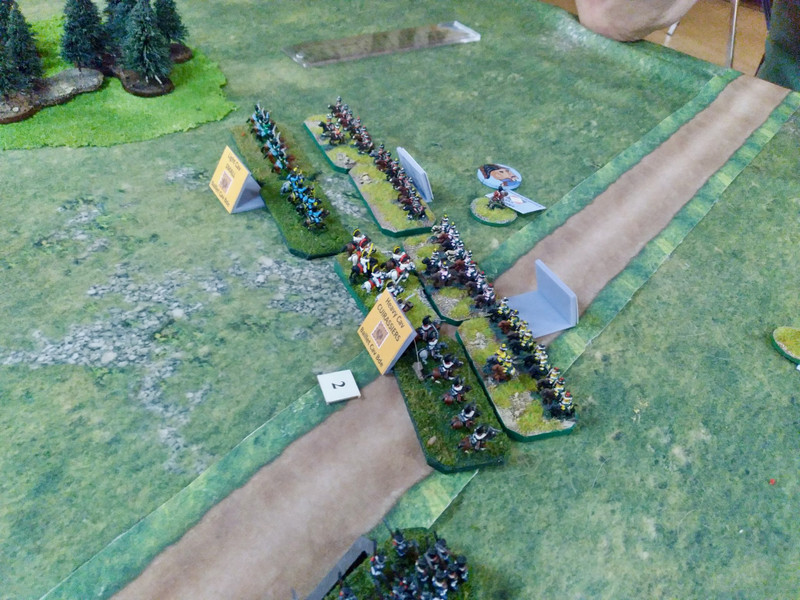
James realized that the key to survival was aggression, and pushed his infantry forward. A fortunate volley drove the French light foot out of the north half of the village (the church square) and that reversal seemed to perplex the French players, who never used their four veteran grenadier regiments to full advantage after that.

On the Austrian right, Murat’s two dragoon brigades are slowly and relentlessly pushing forward, but they are too far away from the intersection and it is too late in the day for this to be a disaster.
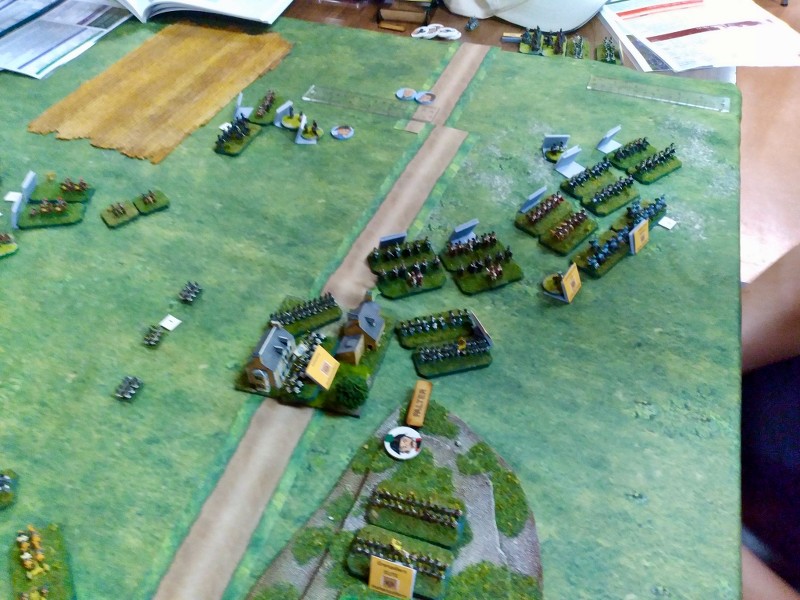
With the Austrians firmly holding the centre of the table, and only a few turns remaining, the French players conceded defeat.
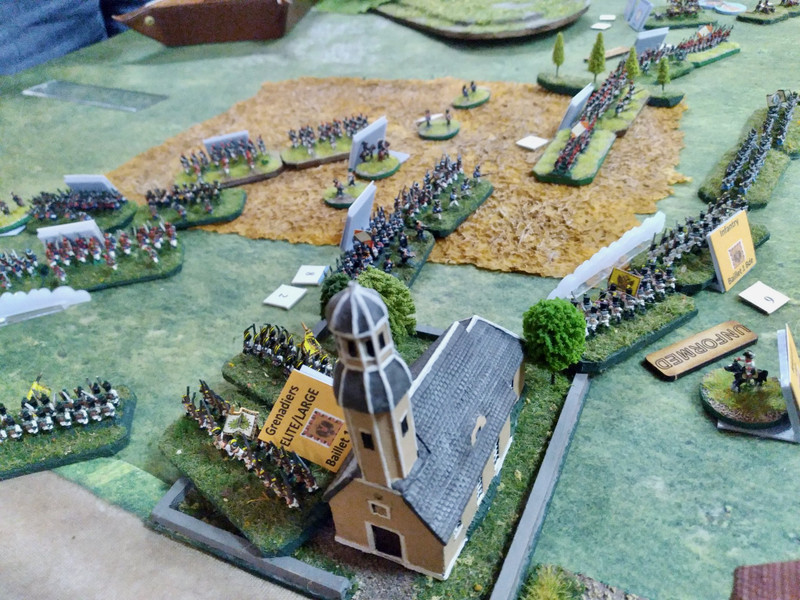
I had worried that the game would be a one-sided affair, with the French cruising to an easy victory, but in fact it was a close battle and the Austrians, ably and aggressively handled, had a convincing victory. Most importantly, the players had fun, I gained enough confidence to run another game at another event, and I got to know the rules much better.
Perhaps I’ve made the same fudge that the designers of the Command and Colors Wertingen scenario did by giving the Austrians more units on the table than the historical battle would suggest - from what I’ve been able to gather, the French had a 3-1 advantage. Perhaps I could adjust that by taking away one of the Austrian cavalry regiments, but I’d like to play this though again with some other players to see if there’s a different encounter. Hopefully I’ll write up this scenario for one of the magazine.
Cheers, thanks for reading, and blessings to you die rolls!
MP+
